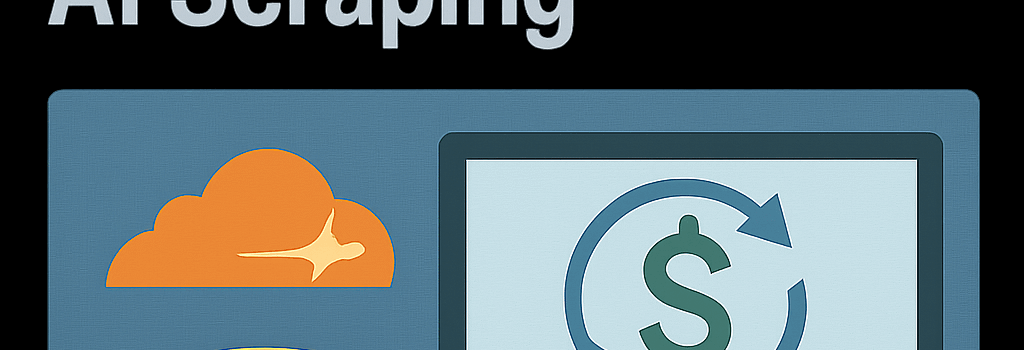Cloudflare Launches Pay-Per-Crawl for AI Scraping

Introduction: Monetizing Web Scraping in the Age of AI
On July 1, 2025, Cloudflare unveiled a private beta for its pay-per-crawl feature, a first-of-its-kind tool designed to let publishers monetize and control AI-driven web scraping. By charging bots per crawl, content creators can reclaim value from large‐scale data harvesting while still enabling licensed access for approved AI services.
Program Overview and Early Participants
- Beta partners: AdWeek, The Associated Press, The Atlantic, BuzzFeed, Fortune, Gannett, Condé Nast (Ars Technica)
- Publisher controls: Set per‐crawl fees, whitelist or blacklist specific bots, and apply granular rules by path or content type
- AI company integration: Partners negotiate prices through Cloudflare’s dashboard and receive usage reports in real time
Cloudflare CEO Matthew Prince argues that unrestricted AI crawling threatens the long-term health of the Internet. “Our goal is to put power back in creators’ hands, ensuring a sustainable ecosystem of original content for both human readers and AI systems,” Prince said in the corporate blog.
Technical Architecture and Enforcement Mechanisms
At its core, pay-per-crawl leverages Cloudflare’s global edge network and token-based authentication. When an AI bot requests a crawl session:
- Cloudflare issues a signed JSON Web Token (JWT) indicating the approved crawl scope and budget.
- Bots present the JWT at each edge location; the request is validated against the publisher’s rate and path rules.
- Usage metering occurs in real time via Cloudflare Workers, decrementing the token balance with each HTTP GET.
- Mutual TLS (mTLS) or API keys ensure that only registered bots consume content.
This model prevents IP spoofing and masquerading—common techniques used by unregulated scrapers. According to Cloudflare, the system can handle over 10,000 concurrent token validations per second with sub-5-ms latency overhead at the edge.
Market Dynamics and Pricing Models
Publishers can choose from flat, tiered, or dynamic pricing schemes:
- Flat fee: Fixed cost per 1,000 pages or per MB of payload
- Tiered plans: Volume discounts kick in at predefined thresholds
- Dynamic auctions: Real-time bidding for premium content feeds
“In our tests, dynamic pricing led to a 20% revenue uplift versus flat rates,” said Jane Smith, Director of Platform at a major news publisher. Cloudflare’s reporting dashboard provides publishers with detailed analytics on crawl frequency, data volumes, and bot identities, facilitating transparent price discovery.
Legal and Compliance Implications
As regulators worldwide wrestle with the EU AI Act and evolving copyright frameworks, pay-per-crawl may offer publishers a defensible position under Digital Millennium Copyright Act (DMCA) safe harbor provisions. By explicitly licensing crawls via signed tokens, publishers can document consent, potentially shielding themselves and AI companies from infringement claims.
“Tokenized access creates an auditable trail,” notes Anna Garcia, a digital rights attorney at TechLaw Group. “This could become a best practice for compliance in the emerging AI regulatory landscape.”
AI Companies Sign On—or Sit Out
For pay-per-crawl to scale, AI firms must adopt Cloudflare’s API. As of August 2025, Microsoft’s Azure AI and startup InfleXion have integrated the system, while Google DeepMind is in pilot discussions. AI vendors stand to gain:
- Higher-quality data from trusted sources, reducing downstream hallucinations.
- Cost efficiency by avoiding wasted cycles on low-value or stale content.
- Predictable budgeting through transparent crawl billing and alerts.
Future Outlook: Dynamic Agents and Intelligent Negotiation
Looking ahead, Cloudflare envisions a marketplace where autonomous agents bid for content in real time. Imagine an AI research assistant negotiating access to paywalled journals, allocating budget to retrieve the latest oncology papers, then synthesizing a report—all programmatically.
“We’re building the plumbing for intelligent agents to buy digital content on your behalf,” Prince said. “This could redefine how AI services source, license, and attribute data.”
Conclusion: Balancing Innovation and Creator Rights
Cloudflare’s pay-per-crawl beta represents a significant shift from passive opt-out models to an active, permission-based system. By combining edge enforcement, tokenized licensing, and flexible pricing, the initiative aims to establish a new equilibrium between AI innovation and publisher sustainability.
Key Takeaways
- Publishers regain control and monetization over AI-driven crawling.
- Technical safeguards like JWTs and mTLS prevent unauthorized scraping.
- Dynamic pricing and transparent analytics enable fair market value discovery.
- Early adoption by Microsoft Azure AI signals industry interest.
- Legal tokenization may satisfy emerging AI and copyright regulations.